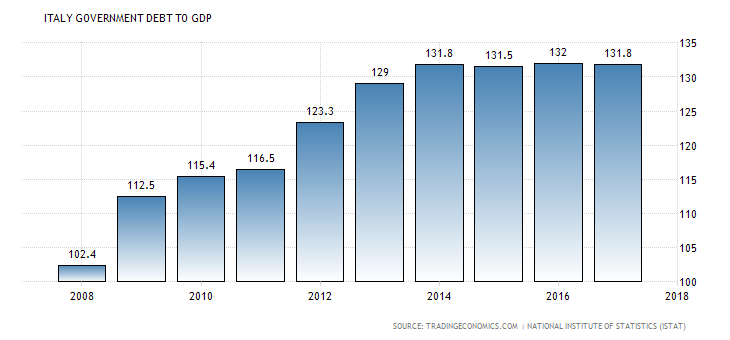Nearly two decades of central bank financial repression have created huge distortions and imbalances in the world economy. Now they are coming home to roost as the impossibility of ZIRP forever dawns on even our mad money printers. Having created yet another round of ebullient financial bubbles, they are now getting palpably nervous.
Even the lady with the perpetual tan and unfailing call for “moar†monetary and fiscal stimulus, IMF head Christine Lagarde, said something sensible over the weekend:
“There is too little economic risk-taking, and too much financial risk-taking.â€
She got the “too much financial risk-taking†part right, but here’s the thing. The apparatus of state policy—-fiscal borrowing and central bank money printing—-can not cause enterprise to flourish. Free market capitalism is the milieu in which business enterprise, invention, risk-taking and labor productivity thrive best. So, yes, reducing market impairments—such as tax rates on production and capital which are too high or regulations, protectionist laws and subsidies which are too onerous—-is always helpful.
These latter steps are now coming into fashion under the heading “structural reform†and they make sense as far as they go. But central bankers like Draghi and international monetary bureaucrats like Lagarde pushing this agenda fail to recognize that their own policies on the fiscal and monetary side currently dwarf the ill-effects of, for instance, over-zealous EPA regulation in the US or protectionist labor laws in Europe.
In fact, long-standing financial repression and absurdly low interest rates have generated malinvestments and debt burdens that are crushing enterprise and true economic risk-taking throughout the world economy. In the DM (developed market economies),the resulting malady is consumer balance sheets that are bloated with debt; and in the EM (emerging markets) the ill is vastly bloated industrial capacity and public infrastructure. So if there were ever a case of “physician, heal thyselfâ€, this is it.
Indeed, the current spectacle of Europe’s monetary arsonist, Mario Draghi, telling Italy’s most recently installed double-talking politician, Prime Minister Renzi, to change the nation’s labor laws so that employers can more easily fire redundant workers says it all. Of course this should be done—Italy can’t thrive in a global economy based on 1960s communist union theories that were invalidated the moment that the comrades in Beijing swapped Mao’s little red book for the printing presses of red capitalism. Still, the redundant labor and resulting economic inefficiency in Italy’s few remaining large-scale industrial plants is trivial compared to the burden of nearly $3 trillion of public debt—a figure that amounts to 130% of GDP and continues to mount.

By his ill-considered and undeliverable pledge to do “whatever it takesâ€, and the phony peripheral bond rally it elicited, Draghi has destroyed any semblance of political will in Italy to tackle its 130% of GDP public debt. Instead, based on the blatant scheming now underway in Italy’s parliament, it is already evident the “labor reform†that Renzi is talking up amounts to statutory legerdemain that will make almost no difference in the domestic jobs market for years to come. Yet, it will provide the pretext for a return to out-and-out fiscal profligacy in Italy next year—-as Italy’s politicians are making evident in an openly public manner.

